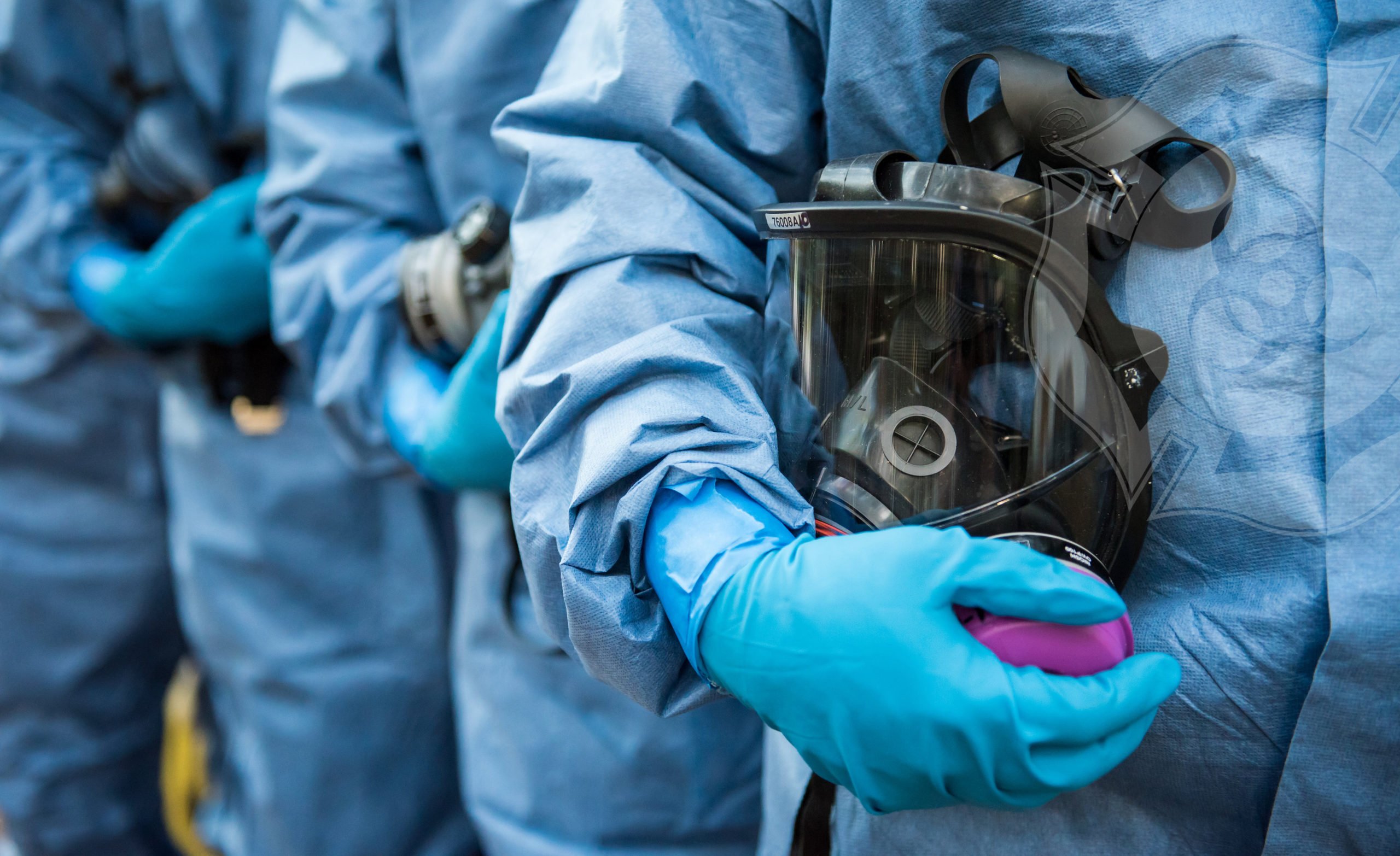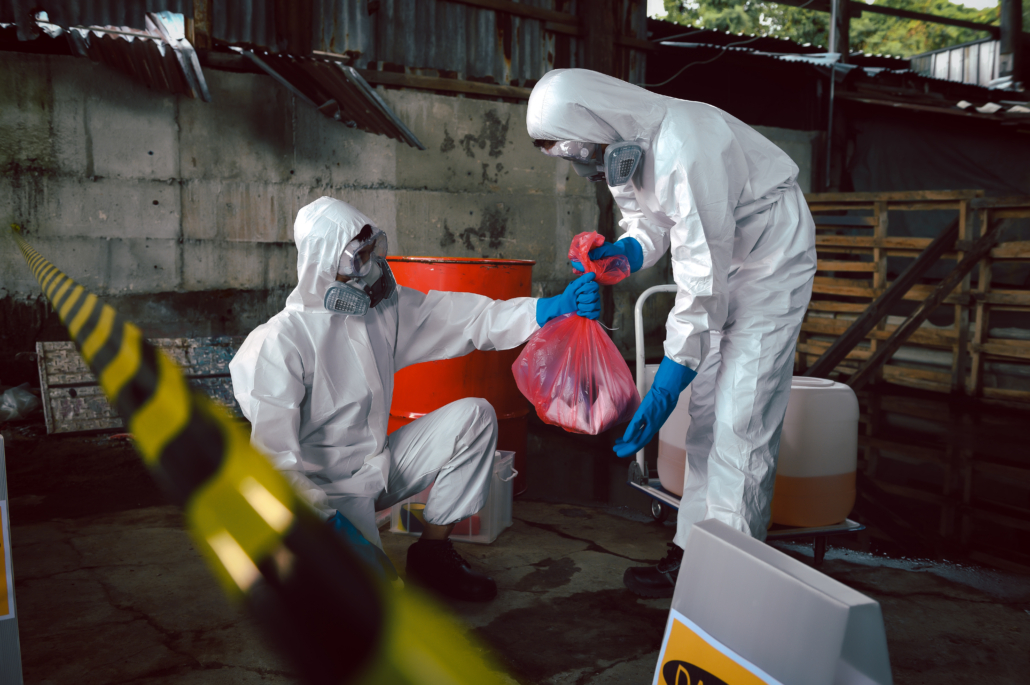Professional Biohazard Cleaning for Crime Scenes, Injury Incidents, and Contaminated Rooms
In the realm of specialist biohazard clean-up, thorough focus to information and adherence to security protocols are critical. As we dig right into the complexities of biohazard clean-up for these delicate atmospheres, a deeper understanding of the obstacles and important treatments involved will arise, shedding light on the important duty of expert clean-up solutions in restoring security and peace of mind.

Relevance of Biohazard Cleaning
Biohazard cleaning following crime scenes and injury occurrences is essential for making certain the safety and security of people and the environment. When these occurrences occur, they often leave a variety of biohazards such as blood, physical fluids, and other potentially transmittable materials. These substances can harbor hazardous virus like viruses and germs, posturing major wellness risks if not appropriately cleansed and disinfected.
Expert biohazard clean-up solutions are educated to manage these dangerous materials safely and efficiently. They have the needed equipment, such as individual safety equipment and specialized cleaning up representatives, to thoroughly decontaminate the impacted locations. By handing over the clean-up to trained experts, people can avoid direct exposure to harmful pathogens and stop the spread of transmittable conditions.
Additionally, appropriate biohazard clean-up is important for protecting the atmosphere. Improper disposal of biohazardous products can infect soil, water resources, and air, positioning a danger to wildlife and the environment. By complying with stringent cleanup protocols, specialists can make sure that biohazards are safely eliminated and dealt with according to regulations, minimizing the danger of ecological contamination.
Kinds Of Biohazards Encountered
Numerous dangerous materials frequently experienced in criminal offense scenes and trauma cases existing significant health risks if not managed properly. Blood and physical liquids are amongst the most usual biohazards located in these situations.
An additional kind of biohazard typically come across is sharp items like needles, busted glass, and various other items that can create injuries and send infections. Chemical threats are likewise a concern, as criminal offense scenes might have materials like tear gas, pepper spray, or medication production materials that need specific handling and disposal procedures to protect against further harm.
Additionally, mold and germs growth can occur in rooms where disintegration or prolonged direct exposure to dampness has actually taken place. These microorganisms can launch contaminants and allergens right into the air, posing respiratory risks to those exposed. Overall, biohazard cleaning experts should be skilled and well-equipped to successfully deal with these numerous sorts of dangerous materials to make sure the security of themselves and others.
Tools and Safety Gear
When dealing with the important job of handling biohazards run into in crime scenes and trauma occurrences, the application of appropriate tools and safety gear is extremely important to ensuring the safety and security of people associated with the clean-up process. Personal protective devices (PPE) such as handwear covers, masks, goggles, and coveralls are important to prevent straight contact with potentially damaging substances. Respirators are critical when taking care of biohazards that may become air-borne, protecting workers from breathing in unsafe particles. Specialized cleansing devices like biohazard anti-bacterials, sharps, and bags containers are necessary for the secure collection and disposal of infected materials. Furthermore, heavy-duty devices such as industrial-grade cleaning agents, foggers, and ozone generators might be needed her response to thoroughly disinfect the afflicted location. Making sure that all tools is effectively kept, routinely checked, and used according to safety and security standards is crucial in reducing the risk of direct exposure to biohazards throughout cleaning procedures.
Cleaning Process and Strategies
Efficient and comprehensive cleaning of biohazardous materials from crime scenes and injury cases needs careful attention to information and adherence to rigorous safety procedures. The cleanup procedure commonly involves numerous vital steps. At first, the location has to be examined to determine the level of contamination and the suitable cleaning techniques required. Next, all biohazardous products, including blood, bodily liquids, and how to clean up blood from sheets cells residues, need to be meticulously eliminated and thrown away based on neighborhood policies.
Adhering to the elimination of biohazardous products, the affected location undertakes an extensive cleansing and disinfection procedure. This step involves the use of specialized cleansing agents and tools to guarantee that all traces of contamination are eliminated. After cleaning, the area undergoes rigorous screening to confirm that it is risk-free and free of any type of continuing to be biohazards.

Purification and Disposal Procedures
To guarantee extensive decontamination and proper disposal of biohazardous materials, adhering to the meticulous cleaning process, specific procedures must be meticulously adhered to with rigorous adherence to safety methods. Purification includes the elimination or neutralization of pollutants to lessen the danger of exposure and spread of dangerous substances. This process commonly consists of cleaning, sanitizing, and sterilizing the affected location using customized devices and EPA-approved chemicals.
As soon as decontamination is finished, correct disposal of biohazardous products is vital to avoid further contamination or damage. Biohazardous waste, such as blood-soaked products or bodily fluids, need to be carefully accumulated, packaged, and identified according to governing guidelines. ATP testing. These materials are then moved to certified centers index for disposal through proper networks, ensuring compliance with neighborhood, state, and federal laws

Final Thought
In final thought, expert biohazard clean-up is crucial for ensuring the effective and safe elimination of harmful materials from crime scenes, injury events, and polluted spaces. By utilizing specialized tools, protective gear, and complying with correct cleanup procedures and methods, biohazard cleanup groups can efficiently dispose and sanitize of biohazards, decreasing the risk of direct exposure and damage to people and the atmosphere.
As we dive into the ins and outs of biohazard cleaning for these delicate atmospheres, a much deeper understanding of the difficulties and vital procedures entailed will arise, losing light on the important role of expert cleaning services in bring back safety and peace of mind.
Professional biohazard clean-up solutions are trained to manage these unsafe materials securely and efficiently. By complying with rigorous cleanup protocols, specialists can make sure that biohazards are safely removed and disposed of in conformity with policies, minimizing the risk of ecological contamination.
Overall, biohazard cleanup specialists must be trained and well-equipped to effectively deal with these numerous kinds of hazardous products to ensure the security of themselves and others.
When dealing with the vital job of managing biohazards encountered in crime scenes and trauma cases, the utilization of correct devices and protective gear is extremely important to guaranteeing the safety of individuals involved in the cleaning process.